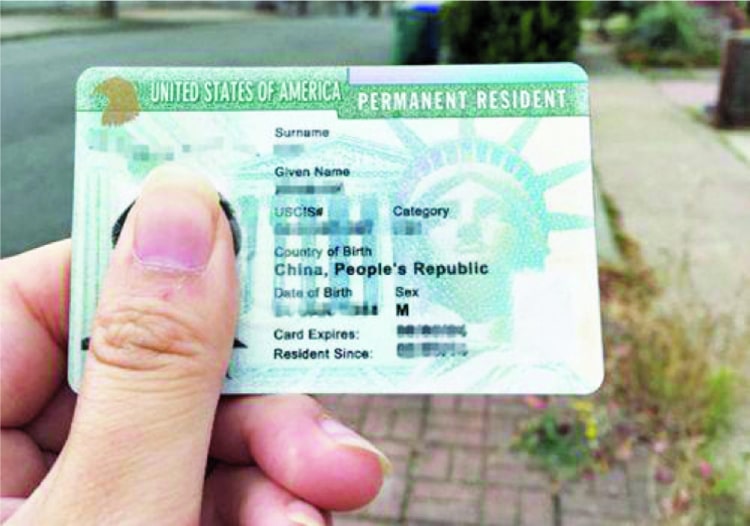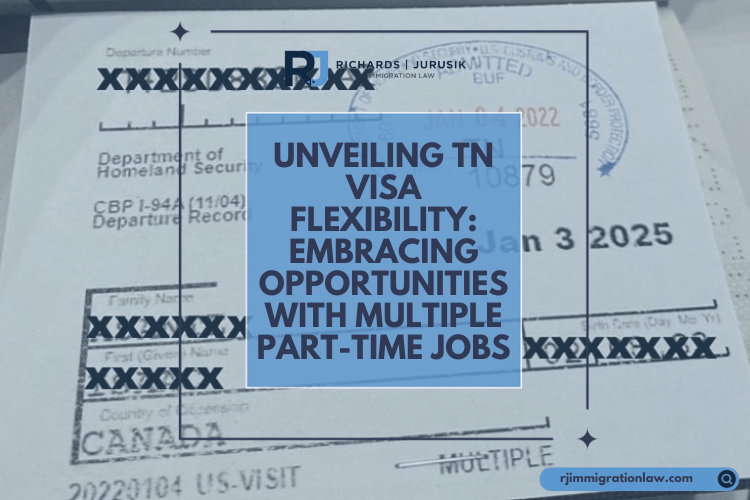The L1 visa is crucial for international professionals transferring from foreign offices to U.S. offices. This visa allows businesses to move their employees to the United States, providing valuable skills and knowledge to their American operations. Suppose you hold an L1 visa and are contemplating permanent residency in the United States. In that case, this article provides a comprehensive guide on the steps involved in transitioning from an L1 visa to a green card. We’ll cover everything from the initial application process to meeting the eligibility criteria, ensuring you understand what it takes to achieve permanent residency.
Understanding L1 Visa Categories and Their Paths to Green Card
L1A Visa and Green Card Route:
- Visa Definition: The L1A visa is designed for multinational managers or executives.
- Green Card Process: The pathway to a green card for L1A holders is comparatively straightforward. It involves the employer filing an I-140 Petition under the EB1C employment-based immigration category.
- Requirements: Both the applicant and the petitioning employer must meet specific criteria set by USCIS for the EB1C category.
Steps to Transition:
- Employer Sponsorship: The U.S. employer must file an I-140 Immigrant Petition for Alien Worker under the EB1C category.
- No Labor Certification: The EB1C category does not require a labor certification (PERM), simplifying and expediting the process.
- Adjustment of Status: If the priority date is current, the applicant can file for Adjustment of Status (Form I-485) to become a permanent resident.
L1B Visa to Green Card Transition:
- Visa Definition: The L1B visa is tailored for employees with specialized knowledge.
- Green Card Process: Unlike the L1A, L1B visa holders must undergo a labor certification process known as PERM. This process is a prerequisite to applying for a green card under the EB2 or EB3 categories.
- PERM Process: The PERM process involves the U.S. Department of Labor, which ensures that no suitable U.S. workers are available for the role intended for the foreign employee.
Steps to Transition:
- Labor Certification (PERM): The employer must first obtain a labor certification from the Department of Labor. This involves a rigorous process to ensure no qualified U.S. workers are available for the position.
- Filing an I-140 Petition: Once the labor certification is approved, the employer can file an I-140 Petition under either the EB2 or EB3 category, depending on the position’s qualifications and requirements.
- Adjustment of Status: After the I-140 is approved and the current priority date, the L1B visa holder can file Form I-485 to adjust their status to a permanent resident.
Employer’s Role in the Green Card Process
For L1A and L1B visa holders, transitioning to a green card is employer-driven. Your employer must take the lead in initiating and sponsoring your green card application. The process typically involves several steps, including filing a labor certification application with the Department of Labor (for specific employment-based green card categories) and submitting Form I-140, the Immigrant Petition for Alien Worker, to U.S. Citizenship and Immigration Services (USCIS). It’s important to note that self-petitioning is generally not an option for L1 visa holders, making the employer’s role essential in your journey towards obtaining permanent residency in the United States. Your employer’s active participation and compliance with immigration regulations are crucial for a successful green card application.
Employer Responsibilities
Employers are critical in the green card application process for L1A and L1B visa holders. Their responsibilities include several vital tasks:
- Job Offer: The employer must provide a valid job offer for a permanent position within the company. This job offer is essential as it demonstrates the long-term need for the foreign employee’s skills and forms the foundation of the green card application.
- Filing Petitions: Employers are responsible for filing the necessary immigration petitions, including Form I-140 and Immigrant Petition for Alien Workers. For L1B visa holders, the employer must also obtain a labor certification (PERM) from the Department of Labor. This certification verifies that no qualified U.S. workers are available for the position and that hiring a foreign worker will not negatively impact the wages and working conditions of U.S. workers.
- Compliance: Throughout the green card application process, employers must comply with all U.S. immigration laws and regulations. This includes adhering to deadlines, providing accurate information, and maintaining proper documentation. Compliance ensures that the application process proceeds smoothly and minimizes the risk of delays or denials.
Special Considerations
L1A Visa Holders:
- Company Owners: Company owners on an L1A visa may encounter unique challenges when transitioning to a green card. It is essential to prove that the U.S. business is an affiliate, parent, subsidiary, or branch of a foreign company. This relationship must be documented to satisfy immigration requirements and show the legitimate connection between the two entities.
- Expedited Process: L1A visa holders often benefit from an expedited path to permanent residency through the EB1C category for multinational executives and managers. This route typically bypasses the labor certification process, allowing for a faster transition to a green card. The EB1C category recognizes the significant contributions of high-level managers and executives, streamlining their application process.
L1B Visa Holders:
- Labor Certification: L1B visa holders generally pursue green cards through the EB2 or EB3 pathways, which require successful labor certification (PERM). This certification involves demonstrating that no qualified U.S. workers are available for the position and that hiring a foreign worker will not adversely affect the wages and working conditions of U.S. workers. This step is crucial in proving the necessity of the foreign employee.
- Extended Process: The labor certification process can be lengthy and requires detailed documentation and proof of extensive recruitment efforts. Employers must show that they have thoroughly searched for qualified U.S. workers and could not fill the position. This process demands careful attention to detail and compliance with specific recruitment and documentation guidelines, potentially extending the overall timeline for obtaining a green card.
Conclusion
Transitioning from an L1 visa to a green card is a significant step towards permanent residency in the United States. It is vital to understand the specific processes and requirements for your visa category and work closely with your employer to ensure a successful application. This guide provides a detailed overview of the pathways available for L1A and L1B visa holders, emphasizing the importance of employer involvement and proper preparation. By following these steps, L1 visa holders can navigate the transition smoothly and achieve their goal of obtaining a green card.
Schedule a Consultation with an Immigration Lawyer
Citations
We Can Help!
You may have questions regarding going from an L1 Visa to a Green Card. We invite you to contact our team at Richards and Jurusik for detailed guidance and assistance. We aim to provide the most accurate and up-to-date information to make your immigration process smoother and less stressful. The immigration lawyers at Richards and Jurusik have decades of experience helping people to work and live in the United States. Read some of our hundreds of 5-star client reviews! Contact us today to assess your legal situation.







